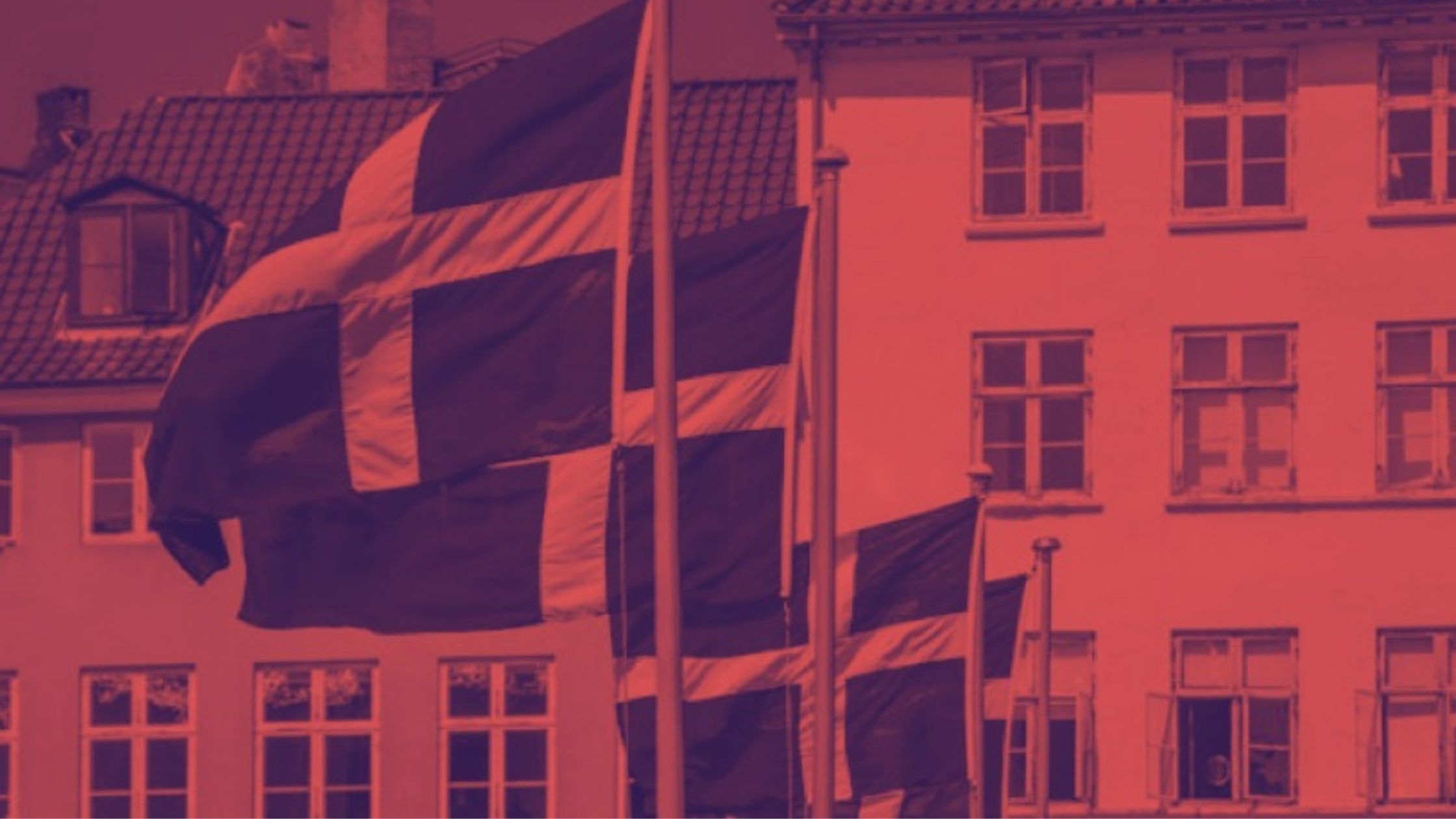
Written by Vasilis Psarras
The term “American Dream” was coined by James Truslow Adams in the early 1930s to describe the belief that anyone, regardless of where they were born or what class they were born into, can attain their own version of success in a society where upward mobility is possible for everyone (Barone, 2020). Unfortunately, today, the US has lost the monopoly of providing the American dream for everybody. Current research has shown that people can achieve the American dream more easily elsewhere, such as in Denmark (Funk- Kirkegaard, 2020).
In Denmark, people from low-income class would need two generations to enter the middle class, while in the US, people at the same level of income would need at least five generations to achieve the same socio-economic status (OECD, 2018). Despite this disappointing fact, Donald Trump – with his tax cut program for the multimillionaires and his despise for universal healthcare – managed to secure 11 million more votes in the November 2020 elections than in 2016, promoting his “Make America Great Again” slogan. He believed that the inequality issue in the USA was not caused by internal anomalies, but by external factors. He persuaded low and middle-class citizens that globalisation and free trade has cost them their jobs, that immigrants have snatched their opportunities and manipulated the belief that the American dream was taken away from US citizens by the corrupt system. In 1961, Eleanor Roosevelt gave her own perception of the American Dream, and contrary to Trump’s political slogan, she believed that the American Dream was a mindset of freedom and liberal democracy that Americans carry with them wherever they go. Notably, she emphasised the importance of open borders for both people and ideas (Roosevelt, 1961).
In Scandinavia, governments managed to create and export their own mindset on social democracy to the rest of the world, the same way the US created the American dream in the early 20th century. Although many people would argue that the economic liberal order of the US society contradicts the social democratic order of Scandinavia, all progressive forces of the Democratic party, and the GOP as well, used Denmark as a role model that the US could follow to solve effectively its economic problems (Acemoglu, 2020).
In order to understand this change of substance concerning social democracy, let’s take the case of Florida. The Latino community in Florida unexpectedly increased its support for Trump, mostly because they had a great fear of socialism in general. Yet Florida voted almost unanimously in favour of establishing a $15 minimum wage, a state intervention proposal made most of the time by social democrats, not liberals (Hausmann & Morales-Arilla, 2020).
More and more people nowadays have abandoned the idea of the American dream, and instead, promote the Scandinavian model of egalitarian capitalism. Taking a look at the income per capita of US citizens, one might have the impression that the average American is amongst the wealthiest in the world. However, with a Gini coefficient of around 0.4 (0 indicating complete equality of income distribution and 1 signaling complete inequality) according to the OECD (2021) data, this average measure appears to have many flaws. In contrast, the three EU Scandinavian countries achieve a Gini coefficient of around 0.25, which is remarkably lower than the one in the US. Clearly, this measure shows a better economic situation for Scandinavia’s average population compared to the US.
What’s more, the Scandinavian nations have created a social safety net to promote equitable development for everybody. They have occupied at least two of the top three positions in the World Happiness Index since it was introduced in 2012, and managed to do so by creating reliable and effective welfare institutions, reducing corruption, and promoting well-functioning democracies (Helliwell et al., 2020). In the US, the social safety net has barely been functioning, and the incompetence of the unregulated private health system has cost the lives of many Americans in a phenomenon that Case and Deaton (2020) name as the “Deaths of Despair”. In their analysis, Case and Deaton (2020) acknowledge the fact that low-income families and minorities suffer much harder from depression and drug overdoses than middle-income people. By lacking a concrete social safety net, the US was left vulnerable to the severe and long-standing consequences of economic recessions affecting low-income people and significantly increasing income inequality (Violante, 2020).
Another major difference between the US and Scandinavia is labour market policies. The major dogma of contemporary labour economics states that flexible labour markets can lead to faster wage adjustments, and therefore allow wages to rise more during a boom and decrease less during a bust. Unfortunately, the US labour market is currently less competitive than it used to be in the past, and has been negatively affected by monopsony powers of large multinational enterprises who use their power to undermine competitive markets and provide lower wages (Phillipon, 2019).
Contrary to the US labour policies of deregulation, the labour market in Denmark is based on the three pillars of “flexicurity”. This triangle consists of high mobility between jobs with a comprehensive income, a safety net for the unemployed and an active labour market policy. This economic agenda has created a secure labour environment which, according to the International Labour Organisation, has amongst the highest levels of participation in trade unions, exercising an important power on determining wages and promoting full employment. New Keynesian economists acknowledge that the declining worker power in the US has created monopolistic powers, undermined free markets, and has an extreme negative effect on wages (Lombardi et al., 2020; Stansbury & Summers, 2020).
However, Scandinavia is not an oasis of opportunities and freedom. The number of billionaires per 1 million habitants in Denmark is almost the same as in the USA, and economists have also explained that the current inequality system in the Nordic countries is a unique case where income inequality is extremely low, but wealth and assets inequality is relatively high (Ranaldi & Milanovic, 2020). They describe this phenomenon as “classical capitalism” and taking a closer look at classical economists, they argue that countries can be, at the same time, unequal and socially optimal. In my opinion, people in capitalist economies are trapped between the desire to create a utopia and the fear to avoid creating a dystopia, and while people inevitably try to escape this trap, they struggle to build hope. Their hope in the 20th century was the American dream. Possibly their hope now is the Scandinavian dream.
References
Acemoglu, D. (2020, February). Social Democracy Beats Democratic Socialism. Project Syndicate https://www.project-syndicate.org/commentary/social-democracy-beats-democratic-socialism-by-daron-acemoglu-2020-02
Barone, A. (2020, March). The American Dream. Investopedia https://www.investopedia.com/terms/a/american-dream.asp
Case, A. & Angus, D. (2020). Deaths of Despair and the Future of Capitalism. Princeton University Press
Funk-Kirkegaard, J. (2020, February). Is Denmark the new “American dream”?. Peterson Institute of International Economics https://www.piie.com/blogs/realtime-economic-issues-watch/denmark-new-american-dream
Hausmann, R. & Morales-Arilla, J. (2020, December). Miami Trumps Biden. Project Syndicate https://www.project-syndicate.org/commentary/how-trump-won-with-venezuela-in-miami-by-ricardo-hausmann-and-jos-morales-arilla-2020-12
Helliwell, J., Layard R., Sachs J. & Jan-Emmanuel De Neve. (2020). World Happiness Report 2020. New York: Sustainable Development Solutions Network
Lombardi, M., Riggi, M. & Viviano, E. (2020, December). Understanding the Phillips Curve through the lens of workers’ bargaining power and business cycle fluctuations. VoxEU https://voxeu.org/article/workers-bargaining-power-business-cycle-fluctuations-and-phillips-curve
OECD (2018). A Broken Social Elevator? How to Promote Social Mobility.
OECD (2021). Income inequality (indicator). doi: 10.1787/459aa7f1-en (Accessed on 15 January 2021)
Phillipon, T. (2019). The Great Reversal: How America Gave Up on Free Markets. Harvard University Press
Ranaldi, M. & Milanovic, B. (2020, December). Capitalist systems and income inequality. VoxEU https://voxeu.org/article/capitalist-systems-and-income-inequality
Roosevelt, E. (1961, April). What Has Happened to e American Dream?. The Atlantic
Stansbury, A. & Summers, L. (2020, June). Declining worker power versus rising monopoly power: Explaining recent macro trends. VoxEU https://voxeu.org/article/declining-worker-power-versus-rising-monopoly-power
Violante, G. (2020, July). Recessions Increase Inequality. VoxEU https://voxeu.org/vox-talks/recessions-increase-inequality

 Is EU citizenship for sale – or for keeps? A critical analysis of the CJEU’s Golden Visa ruling.
Is EU citizenship for sale – or for keeps? A critical analysis of the CJEU’s Golden Visa ruling.  The European Union in Space: From exploration and innovation to security and autonomy
The European Union in Space: From exploration and innovation to security and autonomy  The Rise of the Right: The Threat Right-Wing Extremism Poses to Women and Feminist Efforts in Germany
The Rise of the Right: The Threat Right-Wing Extremism Poses to Women and Feminist Efforts in Germany  The silent shield – how special operations safeguard the global supply chain
The silent shield – how special operations safeguard the global supply chain 


